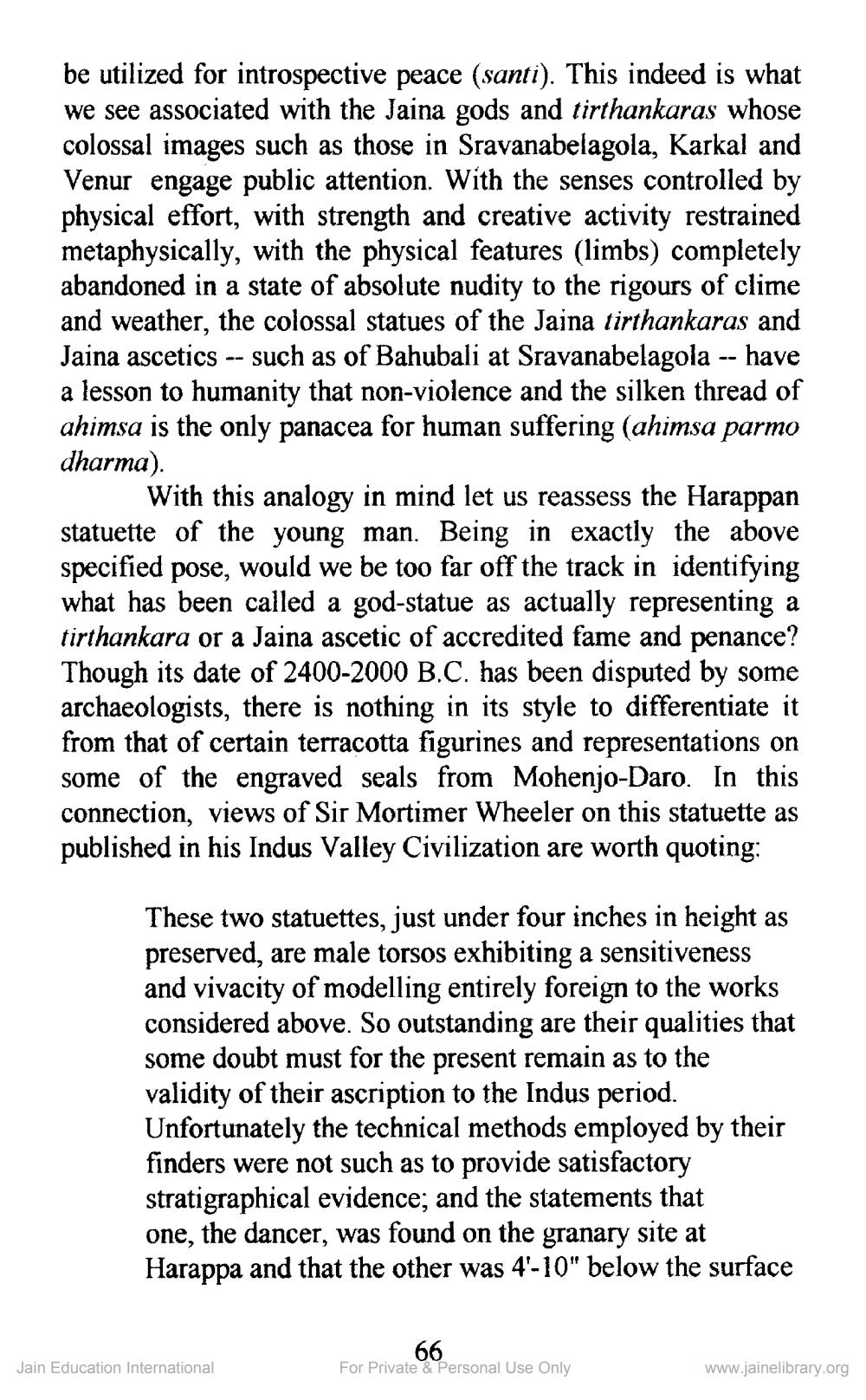________________
be utilized for introspective peace (santi). This indeed is what we see associated with the Jaina gods and tirthankaras whose colossal images such as those in Sravanabelagola, Karkal and Venur engage public attention. With the senses controlled by physical effort, with strength and creative activity restrained metaphysically, with the physical features (limbs) completely abandoned in a state of absolute nudity to the rigours of clime and weather, the colossal statues of the Jaina tirthankaras and Jaina ascetics -- such as of Bahubali at Sravanabelagola -- have a lesson to humanity that non-violence and the silken thread of ahimsa is the only panacea for human suffering (ahimsa parmo dharma).
With this analogy in mind let us reassess the Harappan statuette of the young man. Being in exactly the above specified pose, would we be too far off the track in identifying what has been called a god-statue as actually representing a tirthankara or a Jaina ascetic of accredited fame and penance? Though its date of 2400-2000 B.C. has been disputed by some archaeologists, there is nothing in its style to differentiate it from that of certain terracotta figurines and representations on some of the engraved seals from Mohenjo-Daro. In this connection, views of Sir Mortimer Wheeler on this statuette as published in his Indus Valley Civilization are worth quoting:
These two statuettes, just under four inches in height as preserved, are male torsos exhibiting a sensitiveness and vivacity of modelling entirely foreign to the works considered above. So outstanding are their qualities that some doubt must for the present remain as to the validity of their ascription to the Indus period. Unfortunately the technical methods employed by their finders were not such as to provide satisfactory stratigraphical evidence; and the statements that one, the dancer, was found on the granary site at Harappa and that the other was 4'-10" below the surface
Jain Education International
66 For Private & Personal Use Only
www.jainelibrary.org




